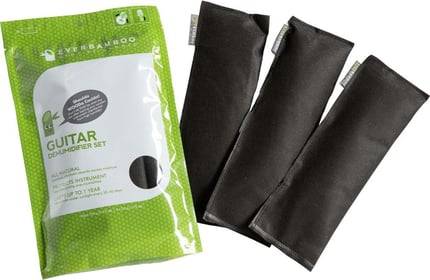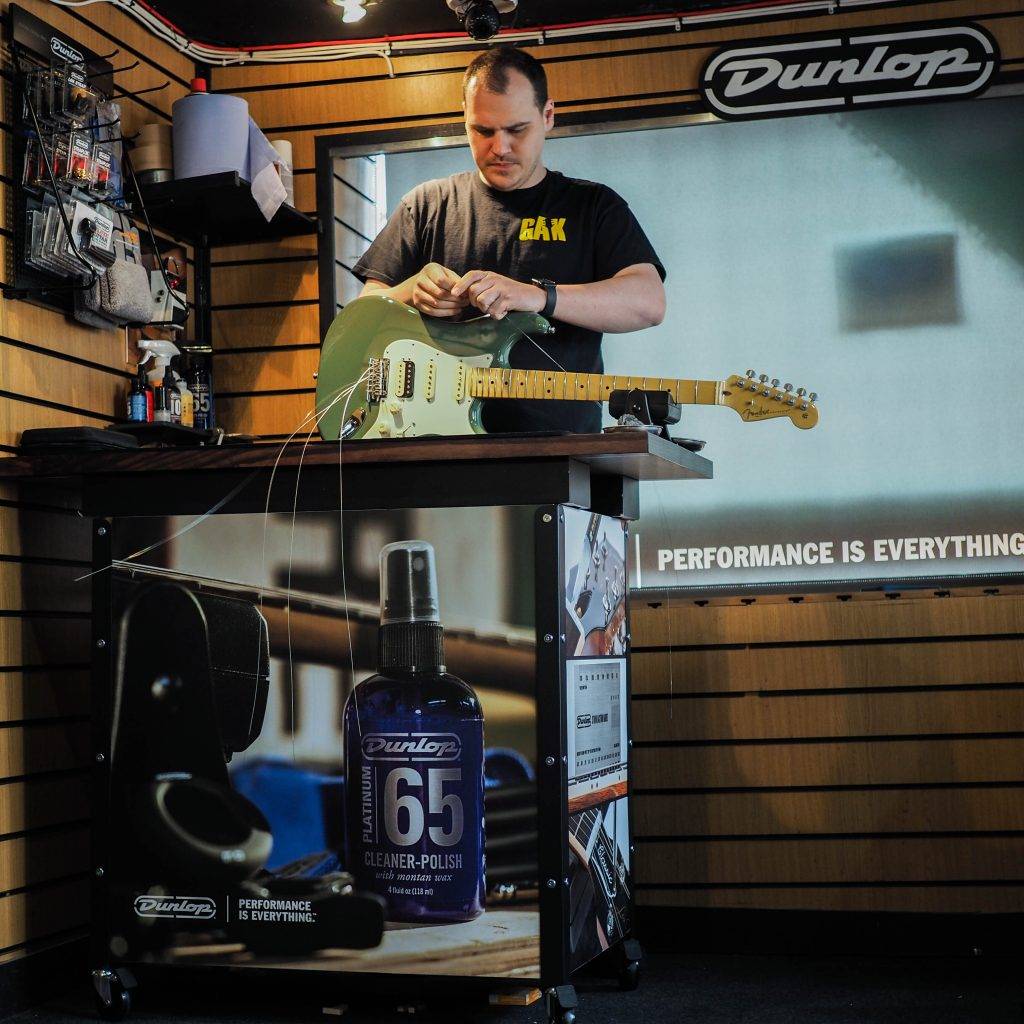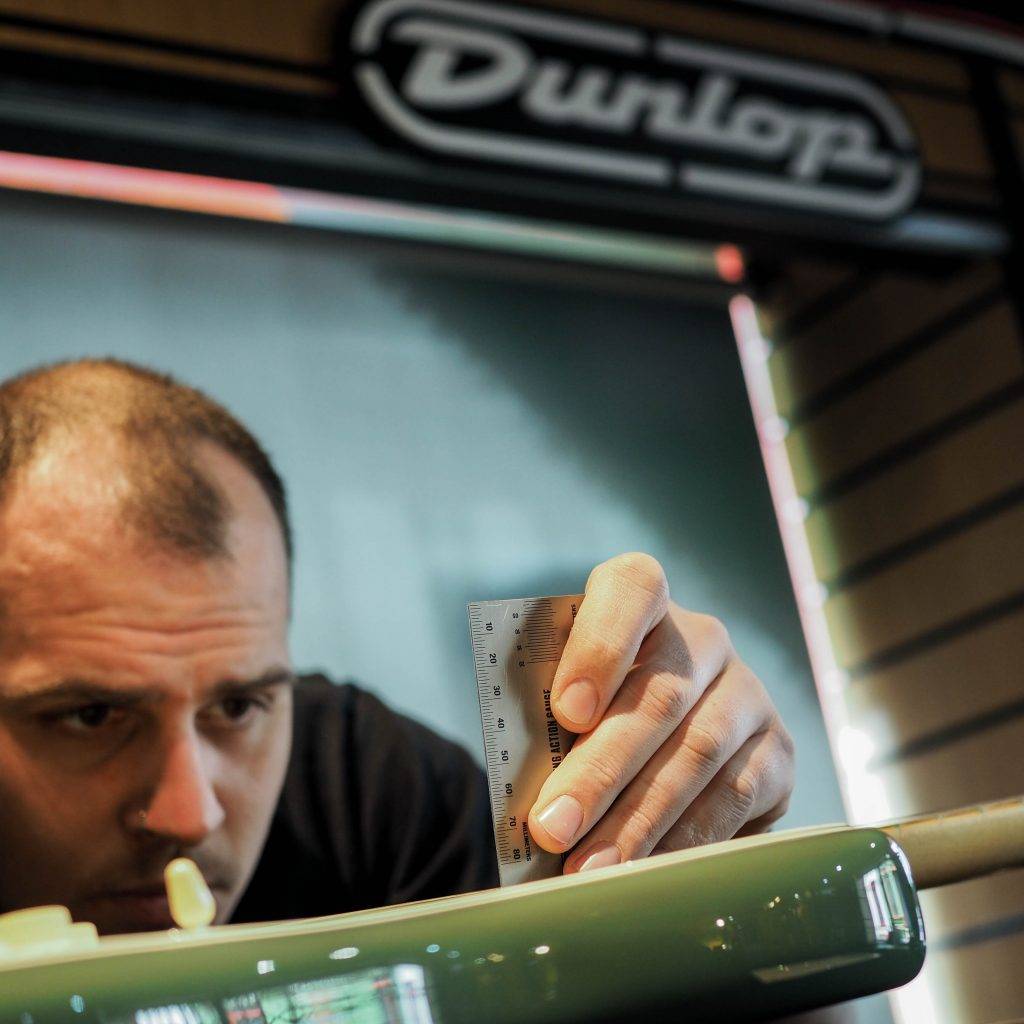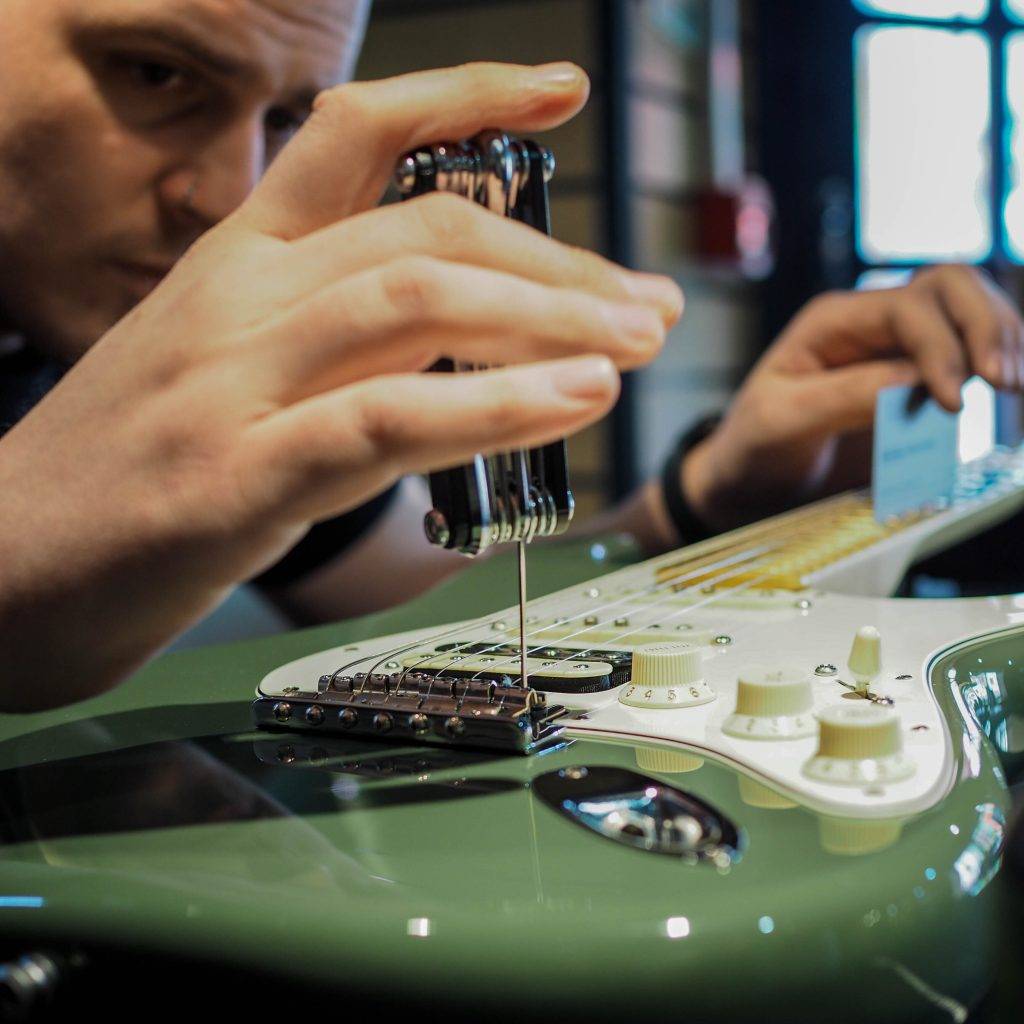How do you make your Taylor guitar continue to sound great and last a lifetime? Read on to see tips and advice about how humidity can greatly affect your guitar, how to clean your guitar properly, why you should keep your guitar in its case, and how to care for different types of finish.
Skip Ahead: Humidity | Clean Your Guitar Regularly | Keep Your Guitar In Its Case | Caring For Different Types of Finish
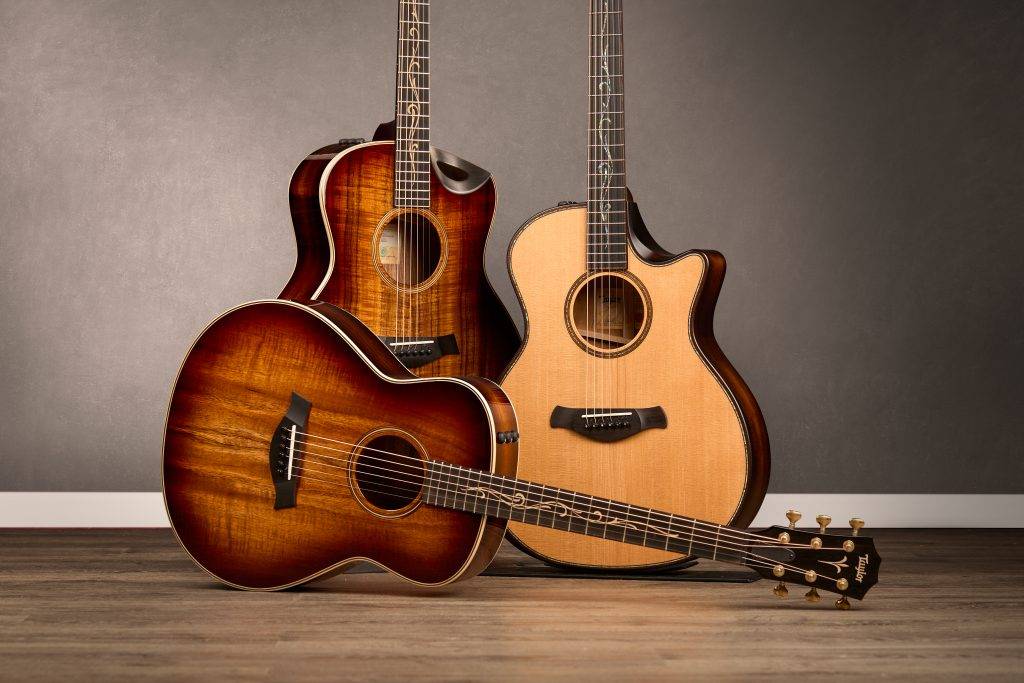
Taking good care of your Taylor guitar is important if you want it to have a long life. The wood can degrade from use, wear, and even climate, making your favourite Taylor guitar not sound or play as well.
<< Check out our full range of Taylor guitars >>
Humidity
Taylor is a strong advocate for keeping your guitar in the ideal humidity range, which is 45% – 55% Relative Humidity (RH) if you want your guitar to last a long time and continue to sound great. This is especially important for high-quality Taylor guitars, as they’re the kind of guitars you want to keep for a lifetime.
If a guitar is kept in a dry place without enough humidity it will dry out, which can cause problems such as low action (strings being very close to the fretboard), a hump on the fretboard where the neck joins the body, sunken across the soundboard between the bridge and fretboard, a flat back, and sharp fret ends that extend beyond the fretboard.
The cold winter months are the worst as this is when people turn up the heating in their houses, causing the humidity to drop significantly. If your guitar isn’t kept within the 45% – 55% relative humidity range, it’s in danger of cracking.
If you live somewhere that’s very humid, you can also have the problem of your guitar getting too much moisture.
If you have high humidity for part of the year, you could use the Taylor Guitar Dehumidifier Set, and if you have high humidity year-round, you should put multiple silica gel or bamboo charcoal packets in your guitar case and change them out every few months.
It’s also ideal to use a room dehumidifier in whichever room the guitar is stored, and you can periodically blow-dry the inside of the case with a hairdryer for 10-15 minutes as well.
Get a Humidity Monitor
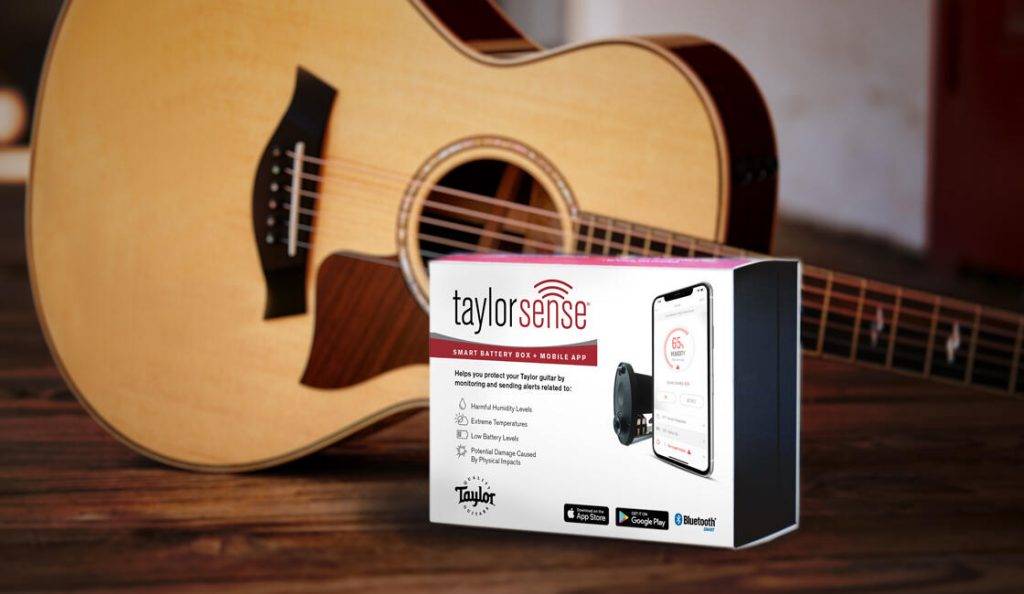
Use the TaylorSense Health Monitoring System, which has a ‘smart battery’ that replaces the regular 9V battery, and has sensors that monitor humidity, temperature, pickup battery life and physical impact. It sends the data to an app on your phone via Bluetooth, so you can check it anywhere. It’s better than an analogue humidity monitor with a needle as it’s more accurate. It’s best to have it inside your guitar case, and you could choose to put one in the room your guitar is stored as well.
Use a Guitar Humidifier
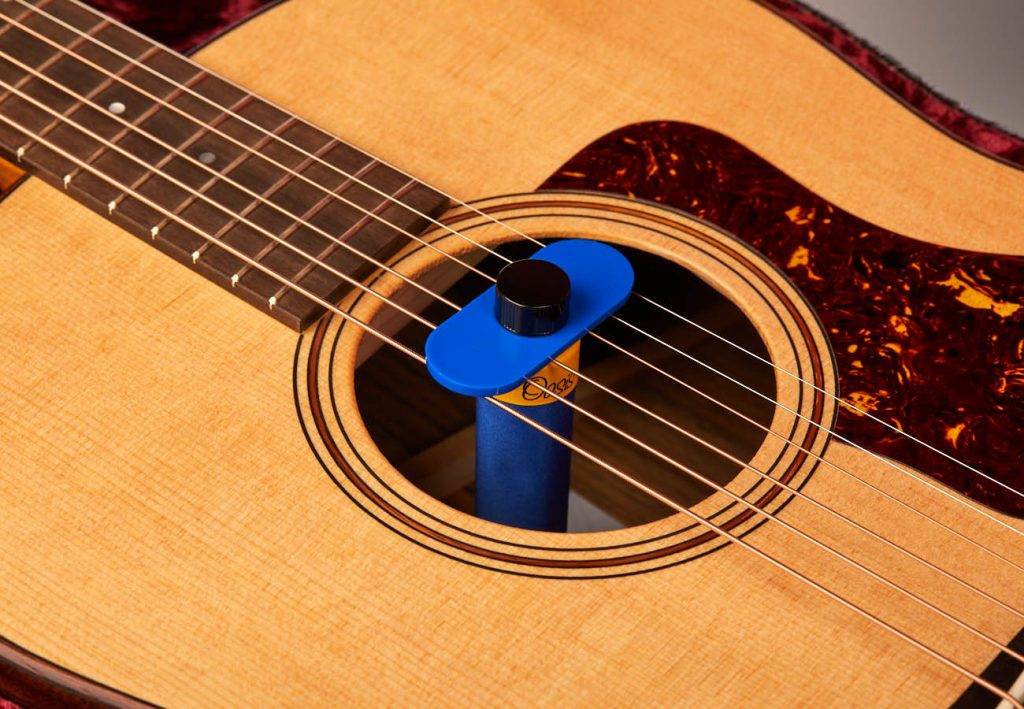
Taylor recommends using the D’Addario Two-Way Humidification System, which is designed to maintain a humidity level of 45-50%, so it’s a low maintenance solution. It includes packets for the soundhole and headstock areas, so you can get even coverage.
Clean Your Guitar Regularly
Cleaning your guitar regularly means it will continue to look great, sound great, and give you the best playing experience.
Start with some TaylorWare Guitar Polish and a Taylor Premium Suede Microfibre Cloth, cleaning the guitar with a small amount of polish over the body and the back of the neck.
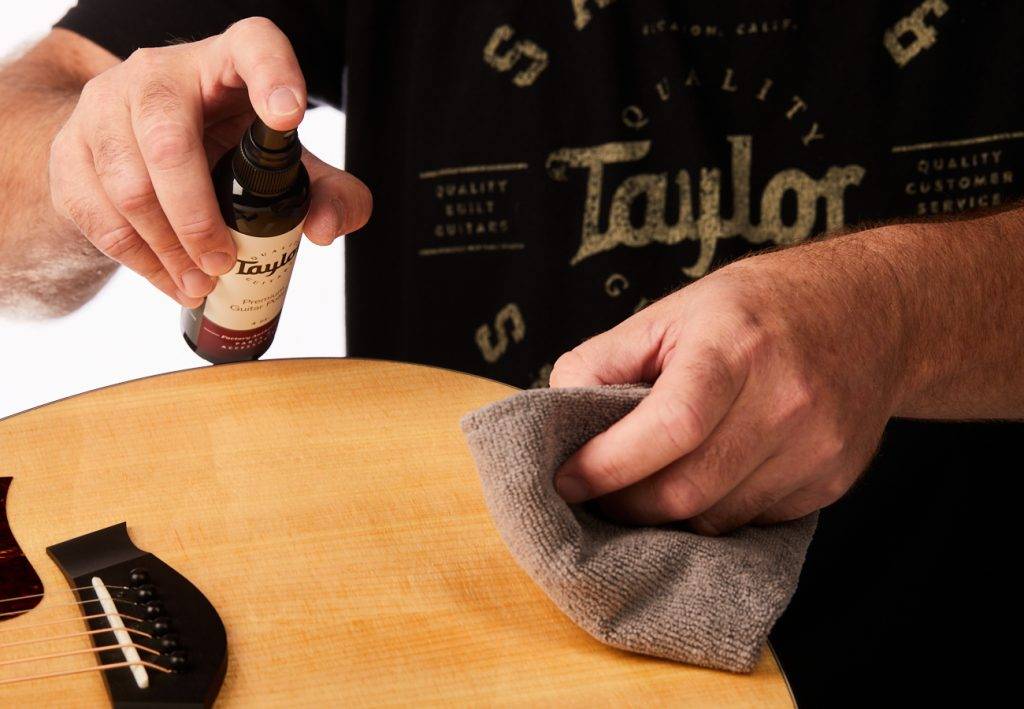
For the fretboard, you should first remove the strings and put some TaylorWear Fretboard Conditioner on a polish cloth and wipe the fretboard. Let the oil sink in for a few minutes then wipe away any excess. Ideally, you want to do this every three or four months.
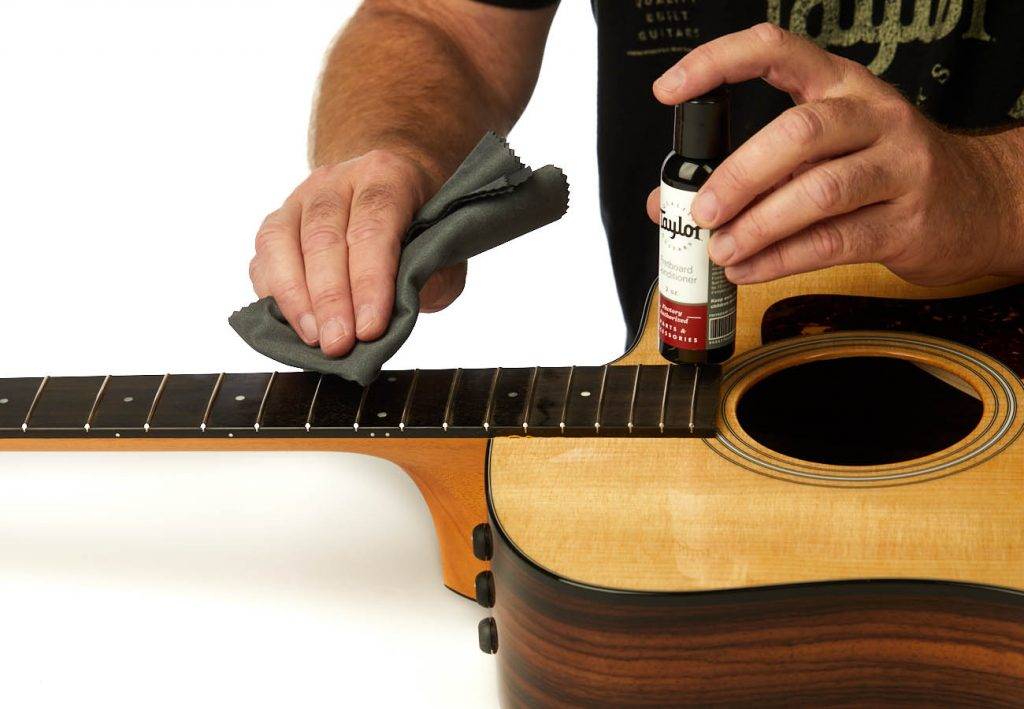
It’s also good practice to wipe down your guitar every time after you play, so any residue dirt from your fingers doesn’t stay on the guitar.
<< See our post on How Taylor Guitars Are Made >>
Keep Your Guitar in Its Case
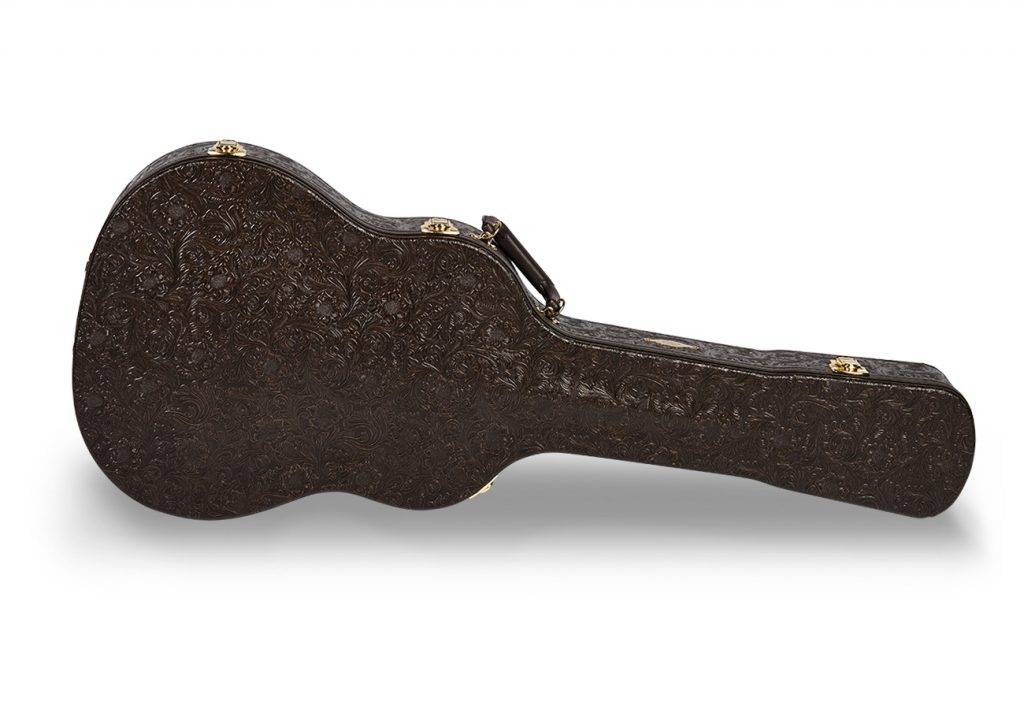
Unless you keep your instruments in a climate-controlled room, the enclosed environment of your case will provide a more controlled environment for your guitar.
While you may prefer to display your guitars on wall hangers or stands for accessibility, it’s better to keep it in the case, especially if the air is dry.
If your guitar is on show, for example, be sure to keep it out of direct sunlight. This will cause premature fading and ageing, as well as dry out your guitar.
Caring for Different Types of Finish
Gloss Finish
The tops, backs and sides of many Taylor guitars have a glossy finish, as well as the back of some necks. Taylor guitars built after 1995 have their UV-cured, polyester-based finish, which is extremely tough – you can use any brand of guitar or even car polish on these areas of the guitar.
For regular cleaning, try the Taylor Guitar Polish, which is also recommended for Taylor guitars built before 1995 that have lacquer, varnish and polyurethane finishes.
Satin Finish
With Satin finishes, the wood is still completely sealed with a protective finish, it’s simply a finish that doesn’t later get buffed to a reflective shine. Most necks, some tops and many back and sides of the body have a satin finish.
Areas with a satin finish can be wiped down with a slightly damp cloth for cleaning. Avoid wax or thicker polishes as they will leave the finish looking splotchy. The TaylorWare Guitar Polish is safe to use on satin finishes.
Raw / Unfinished
The fingerboard and bridge on Taylor guitars are unfinished wood (most likely ebony) that has been conditioned with boiled linseed oil.
Don’t use any polish or wax cleaners on these areas – Taylor recommends using extra-fine steel wool to clean the frets and fingerboards. Simply rub the steel would up and down the length of the frets which will remove any dirt from the fretboard without damaging the wood, and it will also remove oxidation from the frets, making them look brand new again. You can then add a small amount of Taylor’s Fretboard Conditioner if the wood looks dry.
<< Check out our full range of Taylor Guitars >>
GAK’s In-Store Guitar Repairs and Maintenance Service
We offer every level of service, from a simple restring, to paint/finish repair, as well as many other bespoke services. With our expertise, years of experience and wide range of services available, we can breathe life back into old neglected guitars, upgrade components and make sure your number one is studio or gig-ready. Click here to learn more.
